BARCELONA – BLOCK OF MOLL DE LA FUSTA
Case study: On the touristic pattern of Barcelona
Barcelona, as the well-established center of the Catalan region, is a city built upon two thousand years of consecutive development. Given this general circumstance, we found that if we are to determine the unique feature of Barcelona’s touristic charm, it would be necessary to first understand the formation of the city’s past urban development. As the following set of maps will indicate, the the city’s various layers of historical transition have left a visible impression on the city’s urban organization, particularly in the obvious difference of the street patterns in its most iconic districts.
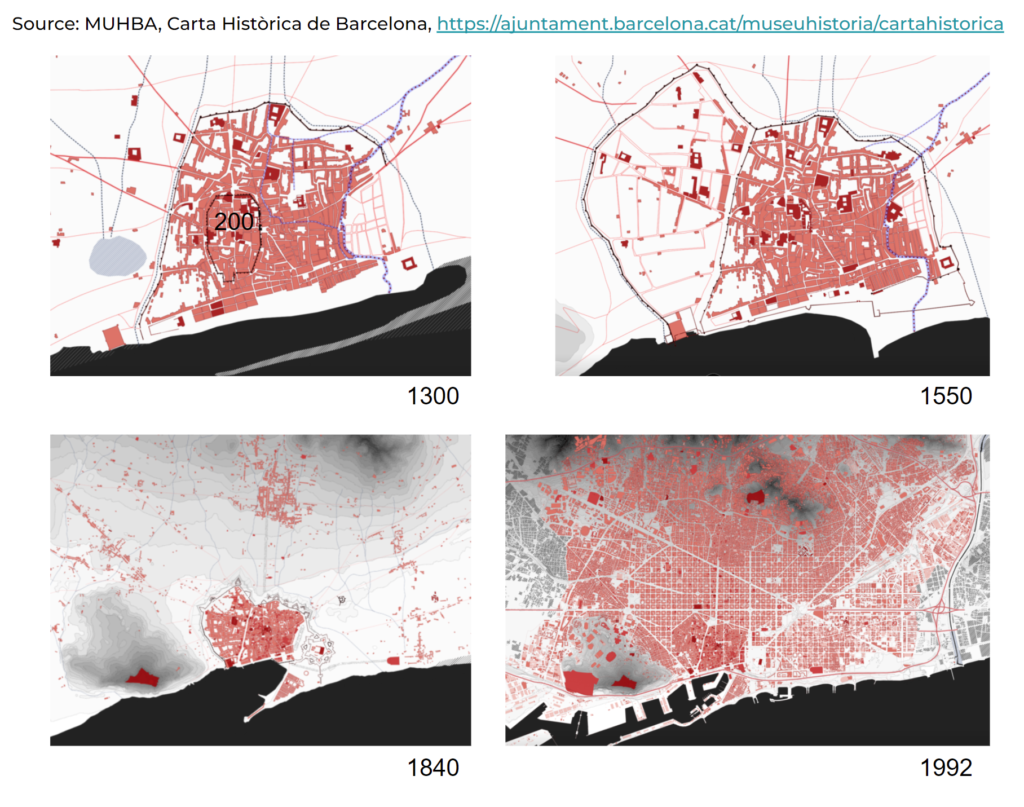
The accumulation of urban layers in Barcelona’s history – notice the distinct features of street patterns from the various period of urban development.
This process of developmemt can also be roughly summerized by an abstract map that visualizes this pattern of culmulative urban development:
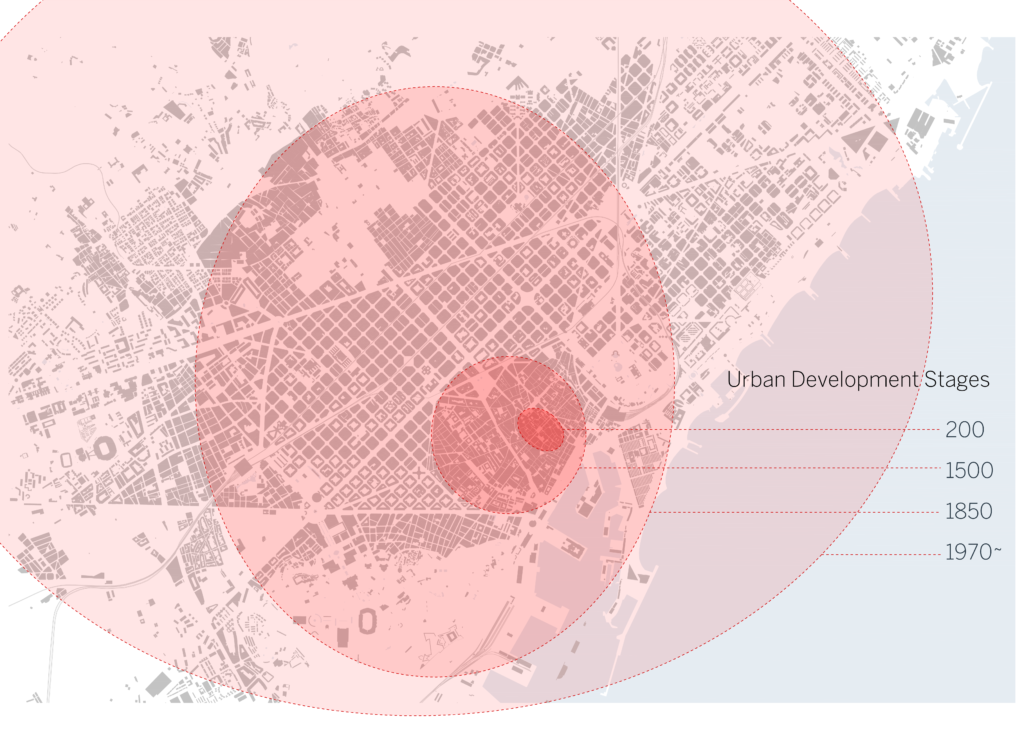
The Hypothesis of Strata
As the historical analysis have shown, Barcelona sets on the outcome of an additive urban landscape that gradually developed overtime. This senario reminds us of the concept of stratification – that is, similar to the geological definition of the term, the long-term accumulation of marks left by the human activities over a period of time can be broken down into a cluster of overlapping layers. Utilizing this concept, we conducted an attempt to identify the patterns of Barcelona’s tourist activities into a likewise collection of overlapping layers. It needs to be noted, though, that since the tourist activities under question exists mainly within the relatively limited temporal contrain of our present time, these activities were identified based not direectly on the temporal matters; however, there is indeed a temporal reason behind their co-existence within the complex urban system of Barcelona.
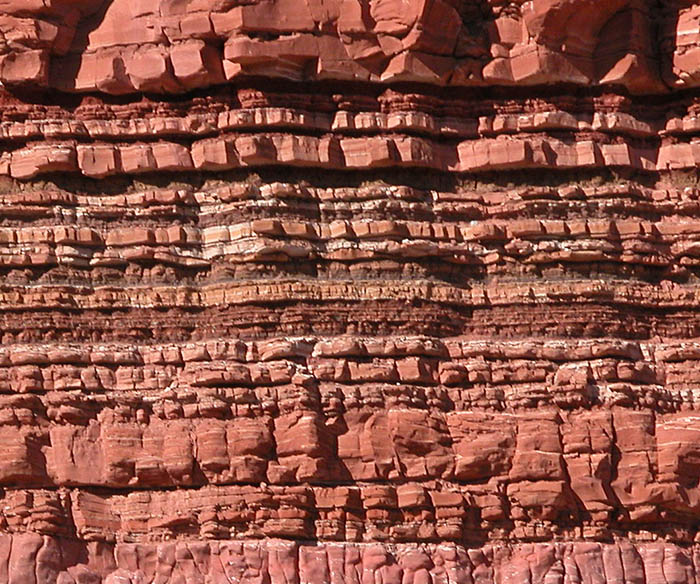 The methodlogy of stratification
The methodlogy of stratification
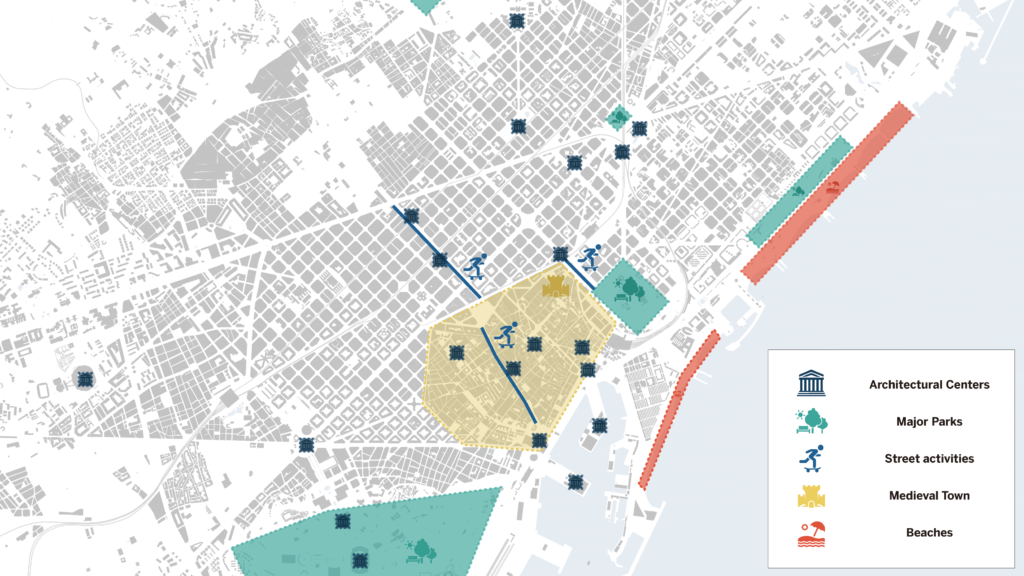
The information obtained by this layer of analysis is combined with the layer of analysis based on the pattern of movement within the city: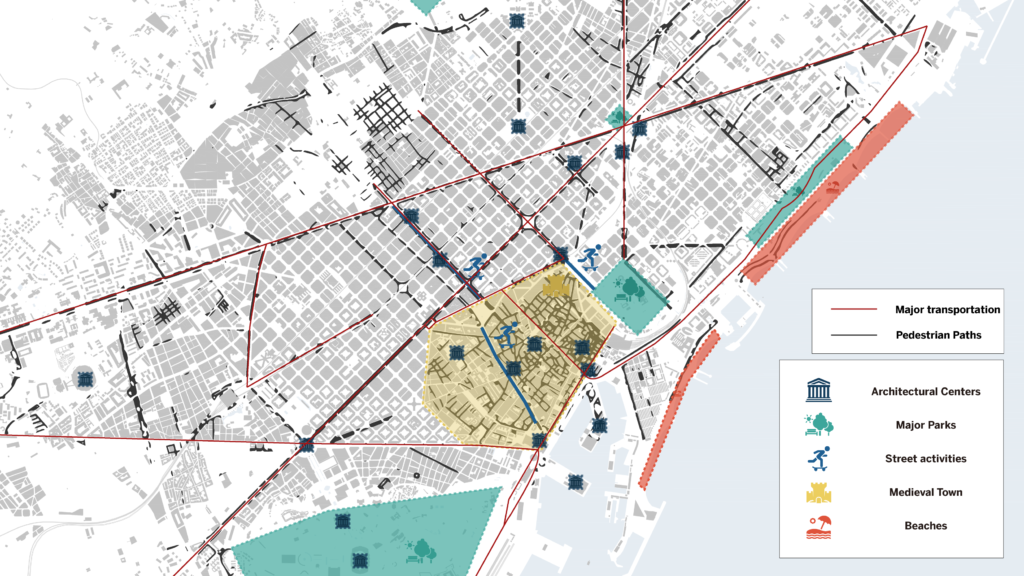
We then obtained an illustrative heatmap of the city’s most active tourist attractions, setting on the varying thickness of the city’s urban strata.
Zoom-in analysis: the case of Passeige de Gràcia
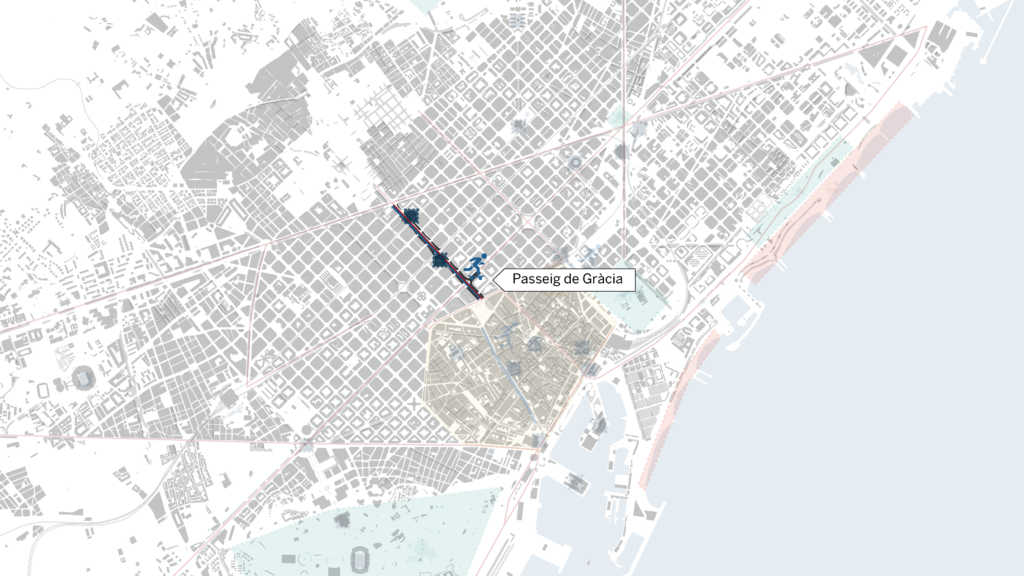
We identified the Passeige de Gràcia as the site of our case study due to its unique location and content. As our strata map indicates, Passeig de Gràcia is not only a site of a few different forms of tourist activities, but is also located at a vital hinge that connects several other tourist centers. For this reason, we advanced towards a further break-down of the Passeige de Gràcia’s tourism.
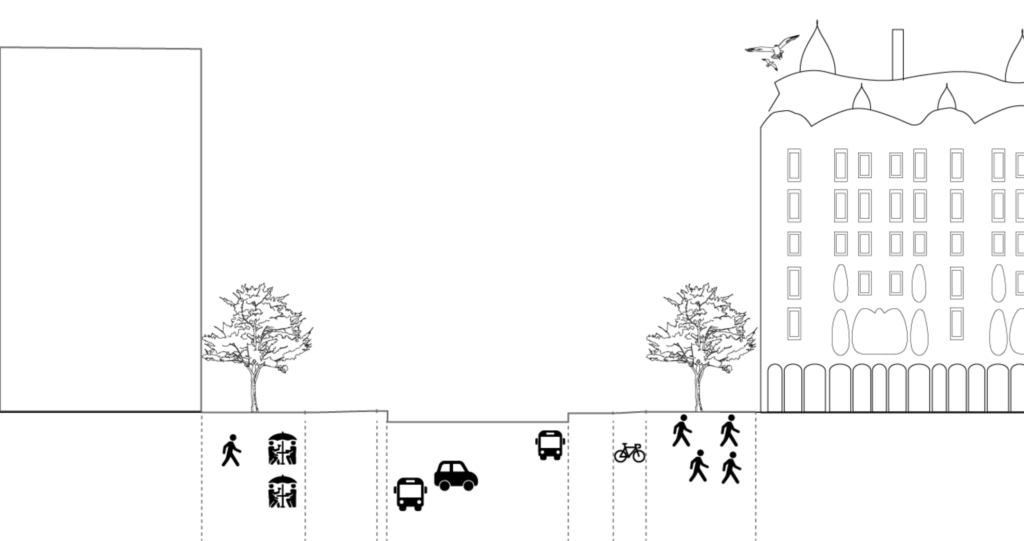
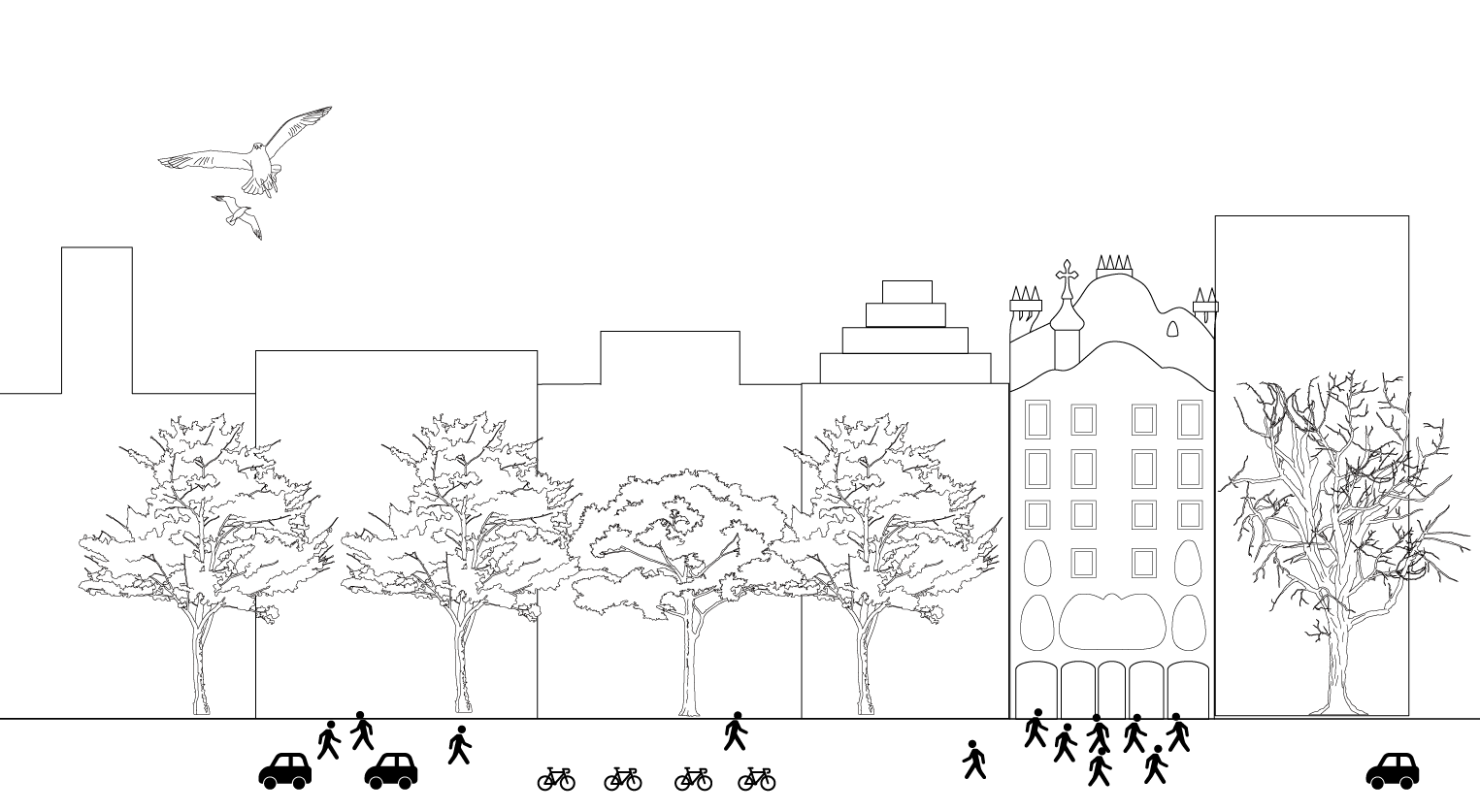
As indicated by the above two diagrammatic illustration of the Passeig de Gràcia’s elevation and section, selected at the point of the two most iconic architectural pieces by Antoni Gaudí, the tourist activity along the streetscape of Passeig de Gràcia has a very intense focus at specific nodes. In order to understand the logic behind the formation of sush nodes, we made an attempt to create a model that utilizes the theory of strata at a psychological level. Instead of the most obvious example of Gaudí’s architecture, we used the more commonplace example of the giftshop of Barcelona Football Club.

As we see, as the site that collects a wide range of items representing varying arrays of attractive value strata, the Passeig de Gràcia itself becomes a complicated geological place that is highly stratified in both the spatial and the cultural sense.



Left to right: The architectural monuments, the shopping places, and the restaurants on the Passeig de Gràcia.

Determining design approach: personalized experience through the strata
Building based on our established analysis, we created a design approach that aims to interconnect the facilities, as examplified in the case of the Passeig de Gràcia, that represents a variety of different strata layers, from the personal perspective of a common visitor.

This diagram illustrates a customized way for an individual to travel through the perceptual strata layers along the Passeig de Gràcia. By producing such speculative travelling route, we can understand the underlying relation between different strata layers, and eventually be able to materialize the format into our final design intervention.
We then applied the similar approach to two other tourist sectors of Barcelona: the Ciutat Vella and the Barceloneta beaches.


The Ciutat Vella scenario: varying spatial experience.
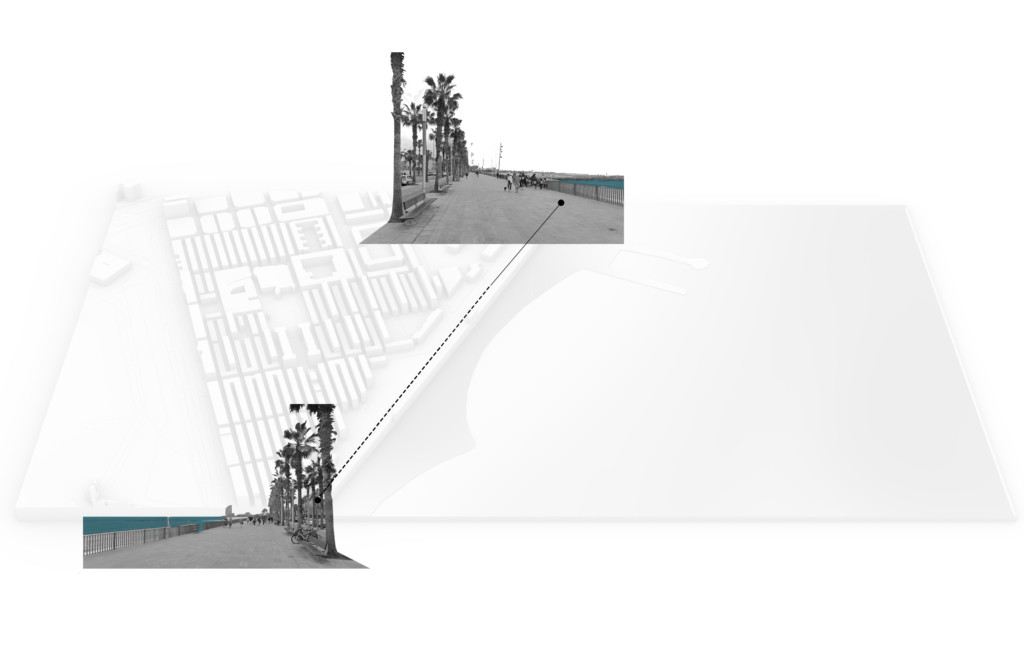
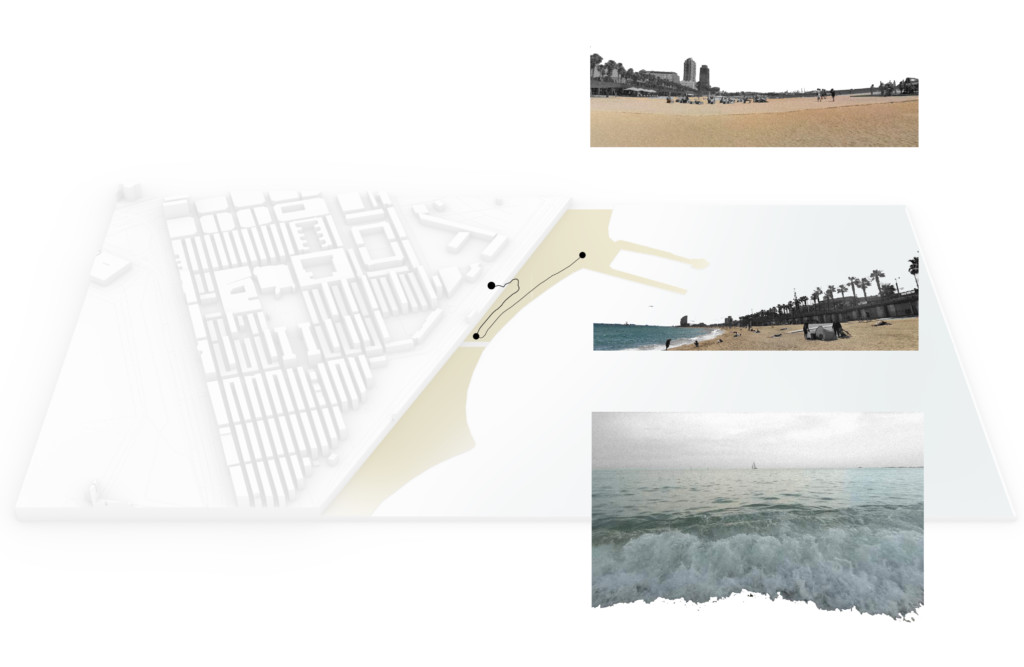
The Barceloneta beach scenario: varying levels of occupation.
Then, by combining what we have learned from this series of case studies, we proceeded to produce our own vision of an artifitially stratified collection of urban spaces, with the aim to bring a similar level of active & productive urban space to the currently under-occupied parts of Barcelona.
The materialized project: on Moll de la Fusta
We choose to commit our intervention along Moll de la Fusta for the following reasons:
1, Its location combines the features of our three analysed urban typology in Barcelona. It is a vital route of urban traffic, aligned along the waterfront facade of the Ciutat Vella on one side, and the harbour water on the other.
2, It is a highly used urban passage due to its location, but it lacks productive program on its wide open space due to the segregation caused by the major vehicle traffic.
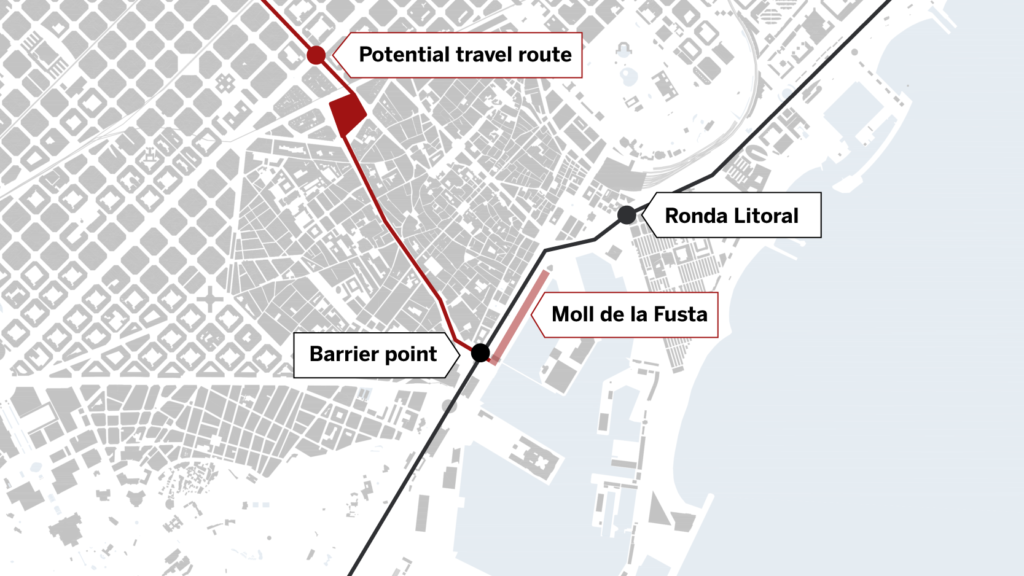
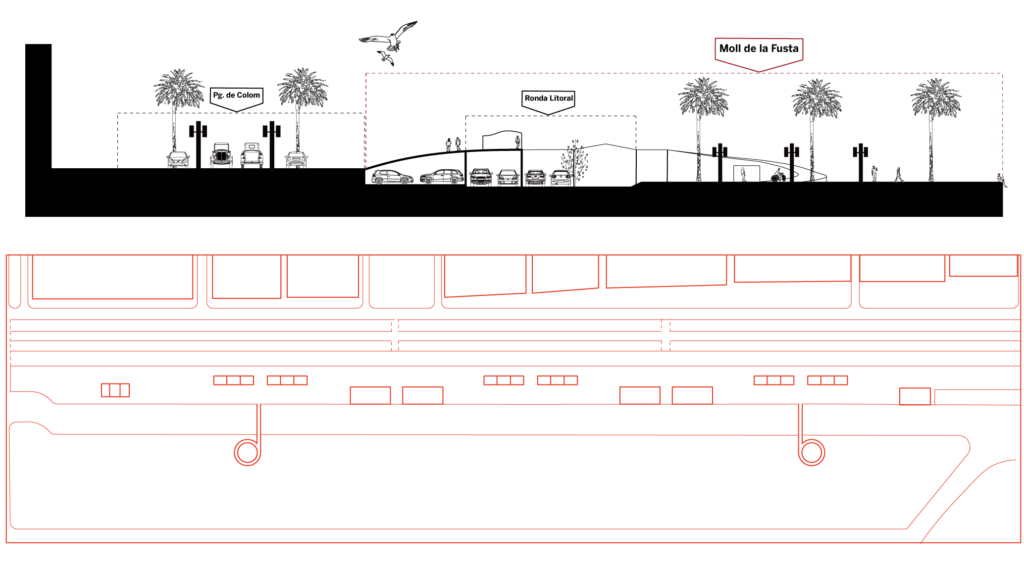
Moll de la Fusta: Current state.

Our idea is to unite the Moll de la Fusta and the Moll d’Espanya into a superblock that functions based on the analysed model.

Hence, we first reconstructed the connective brides between the open space on Moll de la Fusta and the cityfront, then established a verticle series of platforms that guides through the site in a circular manner.
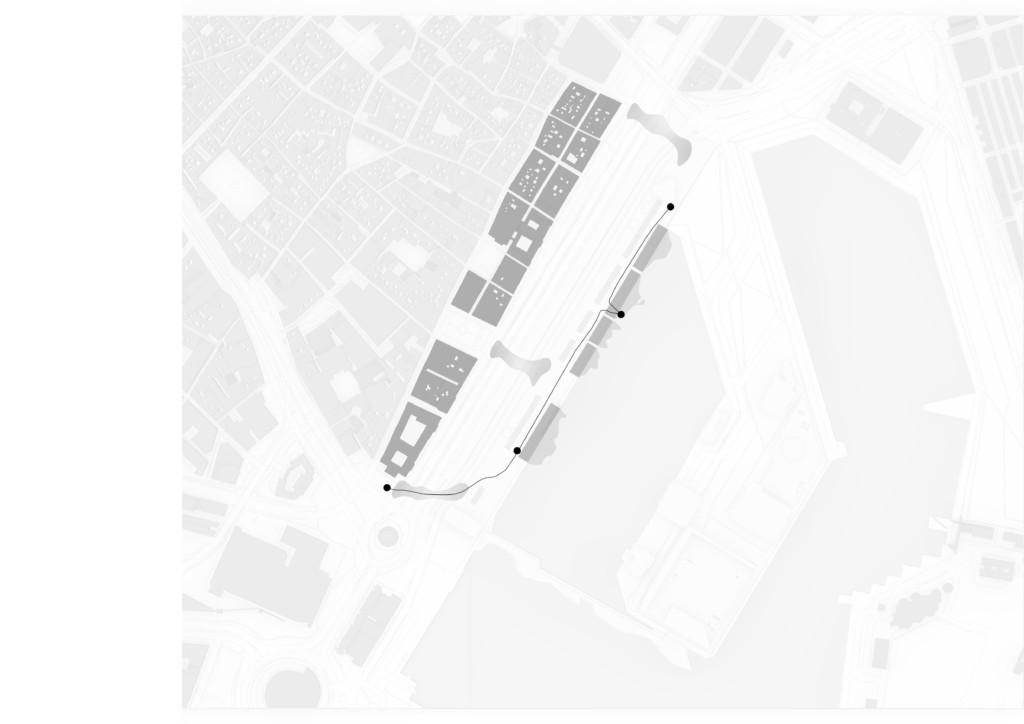

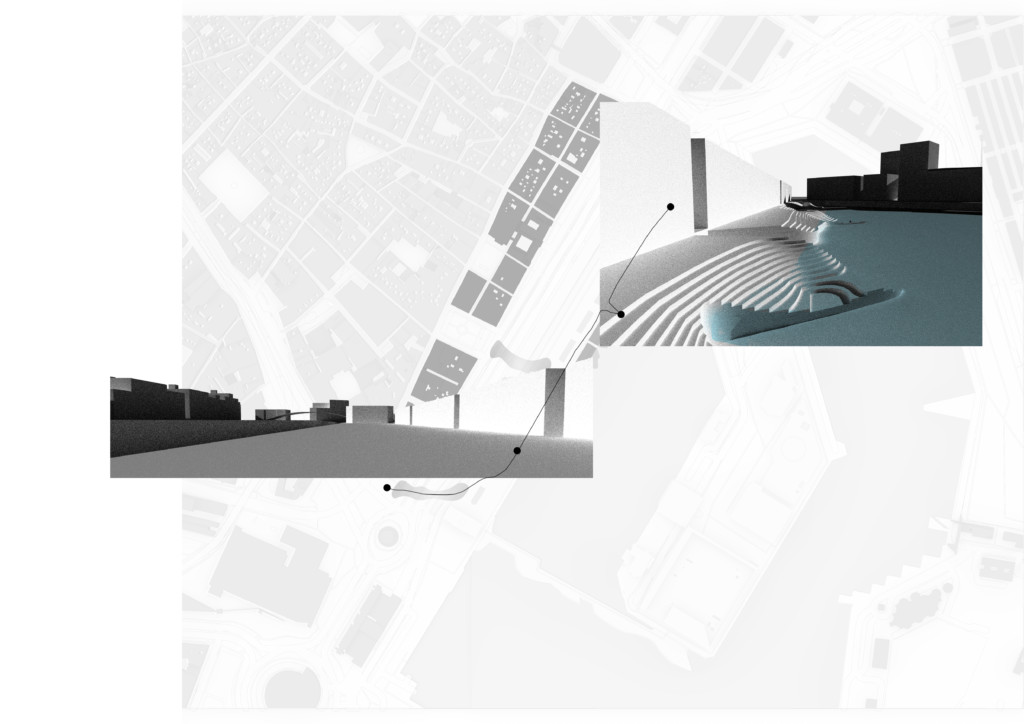
Along the Moll de la Fusta.
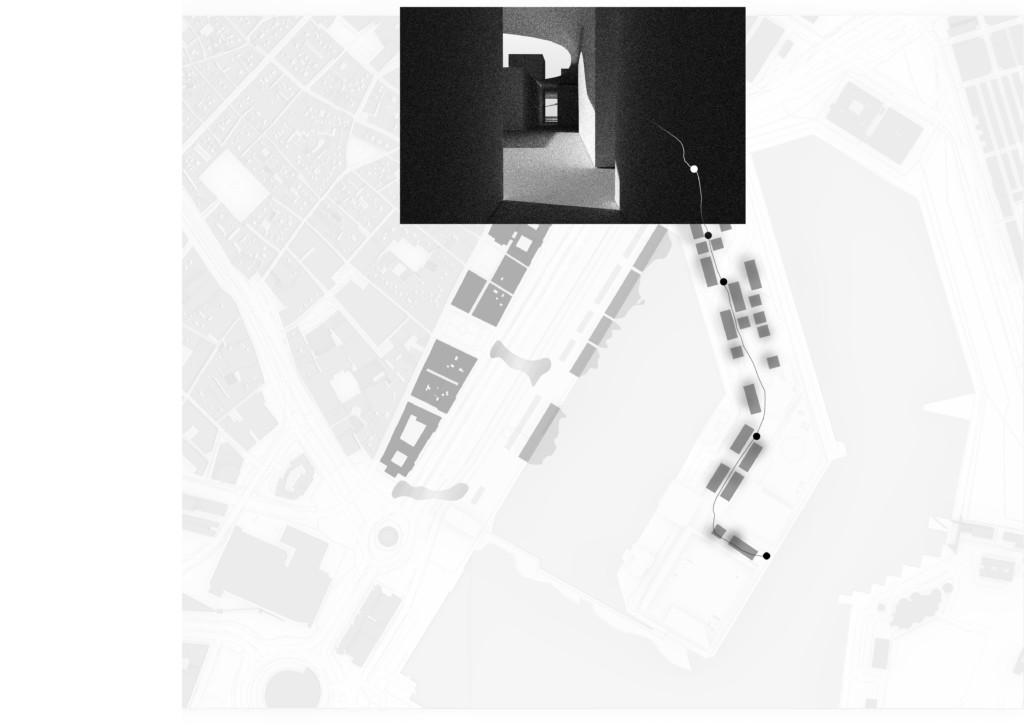
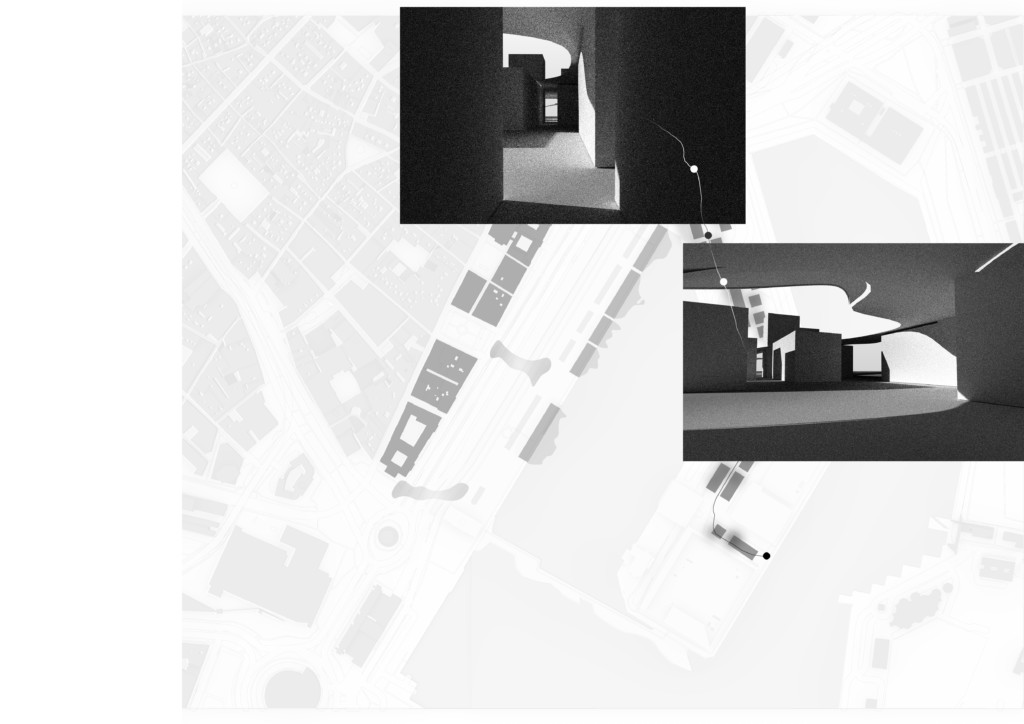

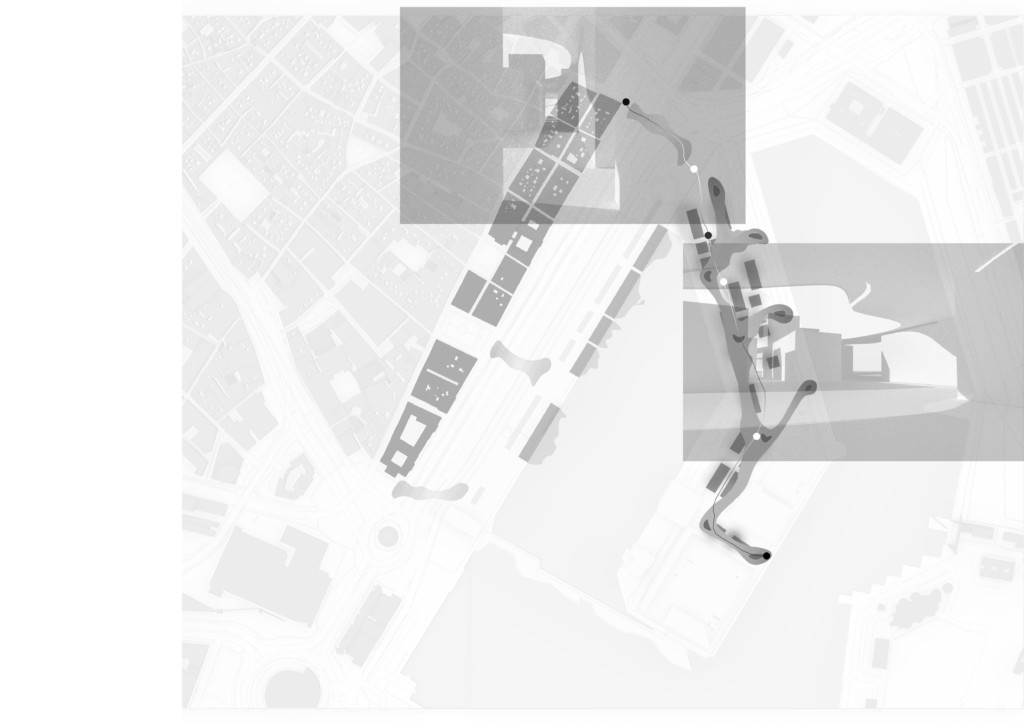
Over to the Moll d’Espanya.

Barcelona – Moll de la Fusta is a project of IAAC, Institute for Advanced Architecture of Catalonia developed in the Master in Advanced Architecture 2020/21 by Students: Angelina Ovsyannikova, Sabina Javanli, and Enlin Guo ; Faculty: Mathilde Marengo, Willy Müller, and Student Assistants: Adriana Aguirre Such, Margherita Pasquali